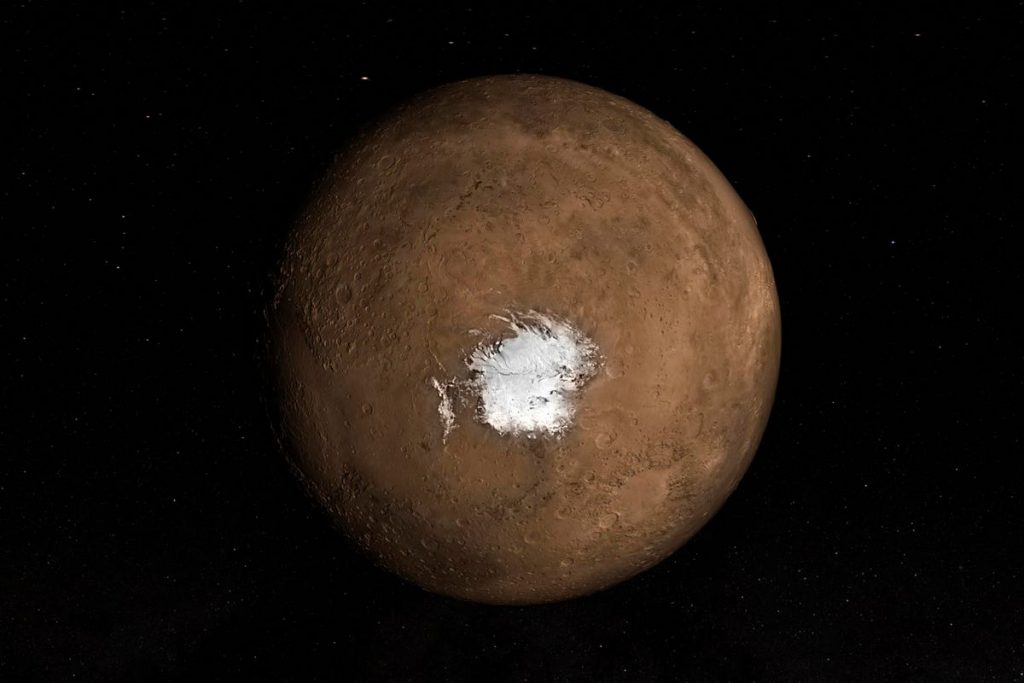The bright white region of this image shows the icy cap that covers Mars’ south pole, composed of … [+]
ESA/DLR/FU Berlin / Bill Dunford
Mars’ enigmatic south pole — the one with the water ice surface deposits that seem to swirl like cappuccino froth — likely has a subsurface composed of smectite clays rather than liquid water lakes, researchers now say.
Since 2018, data from the European Space Agency’s (ESA) Mars Express orbiter had indicated what researchers initially thought might be liquid water lakes as much as three miles under the Martian south pole. Specifically, they were intrigued by bright reflectance spectra detected by the orbiter’s MARSIS (Mars Advanced Radar for Subsurface and Ionosphere Sounding) instrument.
But an international team of Mars polar climate researchers used MARSIS’ ground-penetrating radar and a diagnostic technique known as dielectric permittivity to measure this…
